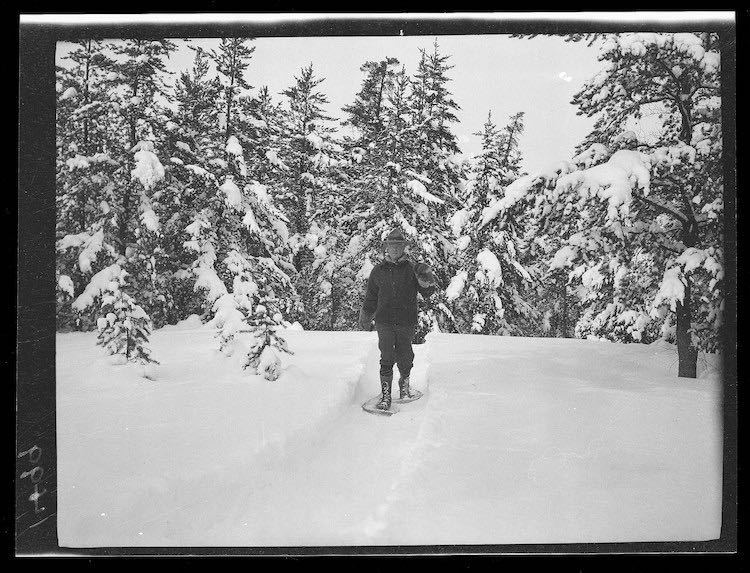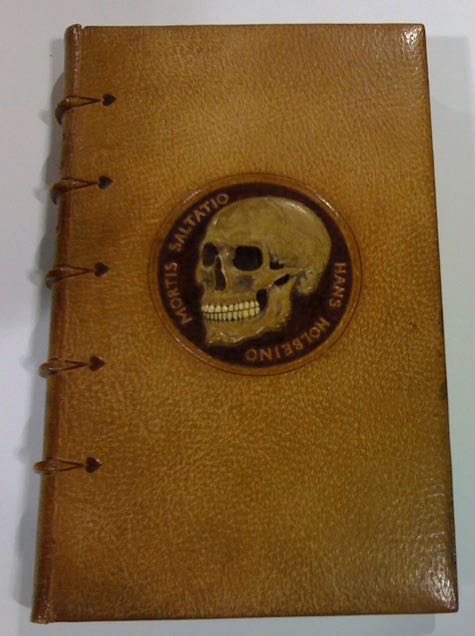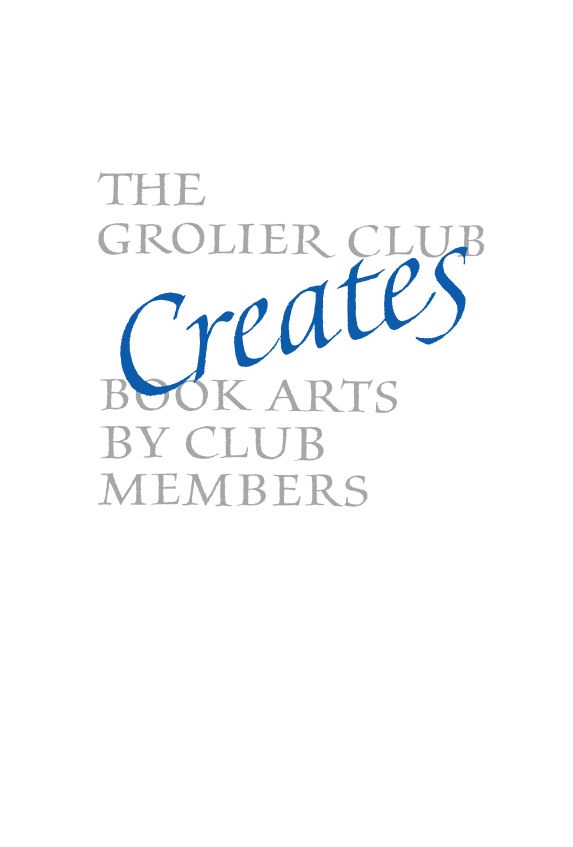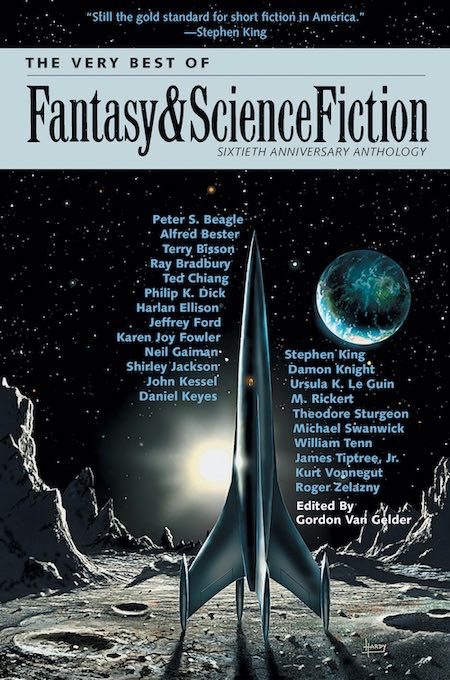
November & December 2009
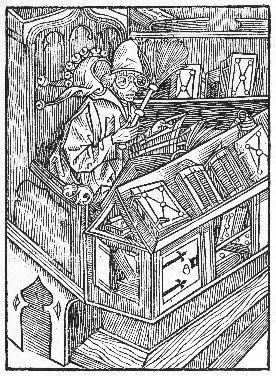
24-27 December 09
How Far Away Is Far ?

The Endless Bookshelf will be far away for the next while (photograph
by Tim Street-Porter). Go for a walk in the woods, or browse in the archives.
Or read a book and send along a note about it.
Current reading
— Alexandre Dumas. The Count of Monte Cristo . . . In Four Volumes (London, Dent, 1894). I am most of the way through the third volume, and have noted the following passages :
III:77, “ This man evidently posses the power to influence events. ”
II:93, ‘ “ no other than Lord Ruthven himself in a living form. ” This fresh allusion to Lord Byron interested Franz. ’
II:197 “ that was the opinion of the Comtesse G —, who, as you are aware, knew Lord Ruthven. ” [Can you say meta- . . . ?]
A page-turner, and almost it is possible to translate back into French from the text as here given — but what a page-turner ! ! There is also an extended passage (III:84-107) in which the paralytic Jacobin, M. Noirtier de Villefort, communicates with his granddaughter Valentine and dictates his will by means of his eye (The Diving Bell and The Butterfly in 1845).
I was prompted to re-read the Count after hearing John Clute’s talk at Readercon upon the novel as the point of origin of much twentieth century superhero fiction and comics (specifically Doc Savage and Superman) ; he had long before mentioned to me in passing that The Count of Monte Cristo is a book of key importance in science fiction. A version of Clute’s talk, “Some Notes on a Model for Superman ” appears in the November 2009 issue of The New York Review of Science Fiction .
— Patrick Pearse. Short Stories . Translated from the original Irish by Joseph Campbell. Edited and introduced by Anne Markey. (University College Dublin Press, [2009], distributed in the U.S. by Dufour Editions). Collection of stories written between 1905 and 1916 by Pearse, a political activist and one of the leaders of the Easter Rebellion, executed by the British on 3 May 1916 ; the translation was first published in 1917. Your correspondent is taking this on his travels and will report in January.
Sur le commerce des pensées : the ‘ illegible real ’
— Jean-Luc Nancy. On the Commerce of Thinking. Of Books and Bookstores . Translated by David Wills. (Fordham University Press, 2009). A great little essay, very French and very perceptive ; a book I am delighted to have received (a gift from [PD]). The excellent and thoughtful introduction by the translator is rife with allusion to French literature, and explicates deftly the significance of “ commerce ” as larger than the narrow mercantile sense most commonly encountered in English : “ the particular form of sharing relevant to the commerce of thinking, a thought’s being with itself and being with others, is called ‘ communication’. ” Wills also specifically names community as part of the function of the book and the commerce of thinking.
I will yield in two instances to the temptation to quote from Nancy’s text :
In contrast to the proverbial door, a book cannot be open or closed : it is always between the two, always passing from one state to the other.
Such a continuous and endlessly reversible transition — for the open book closes in exactly the same way that the closed book opens — derives from the fact that the book can be considered neither plainly as “ container ” nor quite simply as “ content ” (2).A book is a meteor that breaks up into thousands of meteorites whose random courses provoke collisions, strokes of genius, sudden crystallizations of new books, unpublished tracings of characters, enlarged, revised, and corrected editions, an immense interstellar circulation (44).
The commerce of thinking is the inseparable interplay of book, reader, and bookstore (with the author and bookseller in essential supporting roles). Nancy’s playful metaphors give substance to his notions and what starts as a whimsy of the senses becomes tangible, compelling argument. “ The Idea of the book is the Idea that there is no end to this very Idea [. . .] In fact reading does not lead to more reading, but to everything else, to what is sometimes called action and sometimes experience, where we rub up against the illegible real ”.
La Commune des Lecteurs
Dan Visel at the Institute for the Future of the Book has some interesting reflections on reading in the digital era, the continuing sameness of the experience of the electronic book, the glut of information, and reading Finnegans Wake .
So much of human development is a process of learning to deal with desires that are delayed or vexed; so much of the history of the book is a narrative of scarceness. In terms of the market, there was more demand than supply. The move to the digital has changed all that: the supply of a piece of digital content is, for most intents and purposes, infinite, and we find ourselves in a position where supply far exceeds demand. It isn’t just books where this is the case: it might be said that all electronic reading is in this position. If you have an even marginal amount of curiosity, there’s no end of content that could, given the time, be interesting.
But this change in values comes at a price : with this shift in values, it becomes very hard for us to know how to value content. We’re used to the arc of wanting — conceiving a desire, justifying it to ourselves, figuring out a way to get it, receiving it — that serves to convince ourselves of the importance of what we want. When that’s short-circuited, we’re left at a loss.
[. . .] to find way forward for reading : to think about reading as a matter of communal exchange rather than of commodity exchange.
For your correspondent, reading has always been to take part in a
very, very long conversation (see immediately above). In this context,
it is also useful to remember an essay cited earlier, here :
Lawrence Wroth, “ The Bibliographical Way ” (1936),
reprinted in full by Richard Ring, Providence Public Library :
http://pplspeccoll.blogspot.com/2009/09/bibliographical.html.
As a bonus, Visel quotes Courtney Love : “ I told you from the start just how this would end / when I get what I want I never want it again ”.
http://www.futureofthebook.org/blog/archives/2009/12/when_we_get_what_we_want.html
20-21 December 09
— Alexandre Dumas. The Count of Monte Cristo . . . In Four Volumes (London, Dent, 1894), an anonymous & very literal translation, not without its charms.
I:202, the abbé Faria, tutor of Edmond Dantès : “ captivity has collected into one single focus all the floating faculties of my mind. ”
I:278, one of Dantès’ qualities : “ Fortunately, he had learned how to wait. ”
I have just finished the first volume, at the end of which Dantès
remarks, “ farewell kindness . . . now the god
of vengeance yields to me his power to punish the wicked. ”
Recent reading
— Peter Dickinson. Death of a Unicorn (1984).
Recommended by Ellen Kushner for technique & play of memory. A
complex and satisfying book, with a splendid narrative tone. The concluding
sections upend the reliability of the narrator and her observations.
— Peter Dickinson. The Lively Dead (1975). Novel of far west
London, interestng to see how far the mystery form can be rendered malleable.
— The Secret History of Science Fiction , eds. James
Patrick Kelly & John Kessel (Tachyon, 2009). The stories by Disch, Millhauser,
and Wolfe are as clear and compelling and disconcerting as can be ; the
Molly Gloss story is an unexpected delight ; the Atwood piece seems like
a pale photocopy of the Le Guin story, hard to see how its inclusion can
be justified.
Snow Day
Walter McClintock. “ Return to camp on snowshoe trail, evening ” (Montana) [Beinecke Library]
13 December 09
That Time of Year : Best Book of 2009
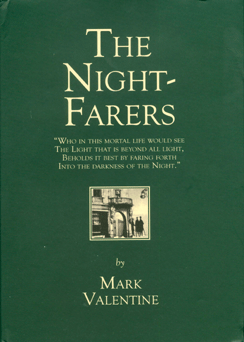
— Mark Valentine. The Nightfarers . Bucharest, Ex
Occidente Press, MMIX.
Most recent book by the author of Masques and Citadels (2003)
and others. Without any hesitation, the book that pleased and intrigued me
most in a year of very good books. The Endless Bookshelf notice from 12-13
August here.
Eleven notable books :
— John Clute. Canary Fever. Reviews . Beccon Publications,
2009. notice
— John Crowley. Four Freedoms . William Morrow, 2009. notice
— [Nick Currie]. Solution 11-167. The Book of Scotlands .
Momus. Series Edited by Ingo Niermann. Berlin, Sternberg Press, [2009]. review
— Howell Davies. Congratulate the Devil . Parthian.
Library of Wales paperback, [2008] (1939 as by “ Andrew Marvell ” ;
this edition with a biographical foreword by Adrian Dannatt, noted here).
— Edwin Hirschmann. Robert Knight. Reforming Editor in Victorian
India . New Delhi, Oxford University Press, 2009. notice
— China Miéville. The City & The City . Doubleday,
2009. notice
— Douglas Rushkoff. Life Inc. How the World Became a Corporation
and How to Take It Back . Random House, [2009]. notice
— Wendy Walker. Blue Fire. A Poetic Nonfiction [Proteotypes,
2009]. notice
— Sarah Waters. The Little Stranger . Riverhead, 2009.
— Gene Wolfe. The Best of Gene Wolfe. A Definitive Retrospective
of His Best Short Fiction Tor, 2009.
— Duncan Wu. William Hazlitt. The first modern man. Oxford
University Press, [2008].
A small clutch of older books read this year :
— Neil Gaiman. American Gods. A Novel (William Morrow,
[2001]). notice
— Christoph Hein, Der fremde Freund. Drachenblut. Novelle [1982 ;
Suhrkamp taschenbuch, 2002]. notice
— Julian Symons. Death’s Darkest Face (Viking,
1990). notice
Two eighteenth-century books I am delighted to have read this
year :
— [Maria Edgeworth]. Castle Rackrent ; An Hibernian Tale.
Taken from Facts, and from the Manners of the Irish Squires, before the Year
1782 (London, 1800, 2nd ed.). commentary
— [Laurence Sterne]. The Life and Opinions of Tristram Shandy,
Gentleman , 1760-7. commentary
It is of course entirely possible that the next weeks might yield another jewel ; we’ll see. [HWW]
Recent reading
— Lono Waiwaiole. Dark Paradise . Dennis
McMillan Publications, 1999. Crime novel set the big island of
Hawaii : cops and criminals, locals, Japanese, Mexicans, no
one is innocent. Waiwaiole writes with an ear for the natural rhythms
of speech and ethnic and regional variants. Dark indeed.
Current reading
— Alexandre Dumas. The Count of Monte Cristo . . . In
Four Volumes (London, Dent, 1894).
— Michael Connelly. Void
Moon . Dennis McMillan Publications, 1999. Crime novel, Los
Angeles and Las Vegas.
Samuel Johnson’s Teapot
Wednesday was the opening celebration for A Monument More Durable than
Brass : The Donald & Mary Hyde Collection of Dr. Samuel Johnson,
a tercentenary exhibition at the Grolier
Club, from the collections of the Houghton Library, Harvard University.
The exhibition (on view through early February 2010) also includes the only
known letter from Johnson to Boswell : where are all the others ?
Hope-in-the-Mist. The Extraordinary Career & Mysterious Life of Hope Mirrlees by Michael Swanwick will be out of print within a week. Six copies remain. Details here.
Wordless
After gathering up the scattered scriptures in his arms Friar Sand opened one of the up and saw that it was as white as snow: not one word was written on it. Quickly he handed it to Sanzang with the remark, “ There’s nothing in this scroll, Master. ” Monkey opened out another scroll to find that it had nothing written in it either. Pig opened another and it too had nothing in it. “ Open them all for us to examine, ” said Sanzang. Every single scroll was blank paper. “ We Easterners really do have no luck, ” he said, sighing and groaning. “ What point is there in fetching wordless scriptures like these ? How could I ever face the Tang emperor ? ”
[. . .] “ The blank texts are true, wordless scriptures, and they really are good. But as you living beings in the east are so deluded and have not achieved enlightenment we’ll have to give you these ones instead. ”— from Wu Cheng’en. Journey to the West . Translated by W.J.F. Jenner (Beijing, Foreign Languages Press, 1986) : Chapter 98 (vol. III, pp. 586-7).
— A.S. Byatt. The Children’s Book (Knopf, 2009). A very interesting core with some great scenes of the Wellwood families mounting Shakespeare in an 1890s summer and some thorny grappling with issues of story and class, but this narrative force is dissipated through infodumps (to use the technical term) and excessive explanation. Nearly everyone in late Victorian and Edwardian literary circles makes an appearance ; and precisely because of this there is an imbalance in what information is given the reader (and why). Olive Wellwood kept me reading long after it was apparent that the novel would end darkly and in fact push on past the summer before the war. (Compare the notable concision of The Shooting Party by Isabel Colegate).
Nineteenth-century Authors at
Auction
Recent sales in Paris and New York included great material by Baudelaire — a
presentation copy of the first Fleurs
du Mal and a notable letter — and
by Poe — Tamerlane
and Other Poems (1827) and the manuscript of
the first half of the poem “ For Annie ”.
— — — —
The Raven and Other Poems (1845)
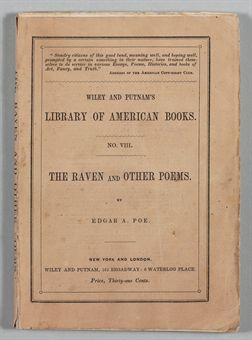
Alexandria
Pictures exclusive to the Endless Bookshelf, from correspondent [SM] during
his recent visit to the Biblioteca
Alexandrina :

In the Library
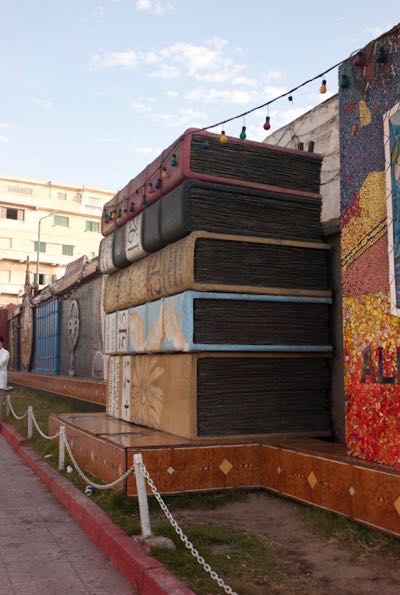
Giant Books on a nearby Street
26 November 09
Baudelaire’s Dictionary
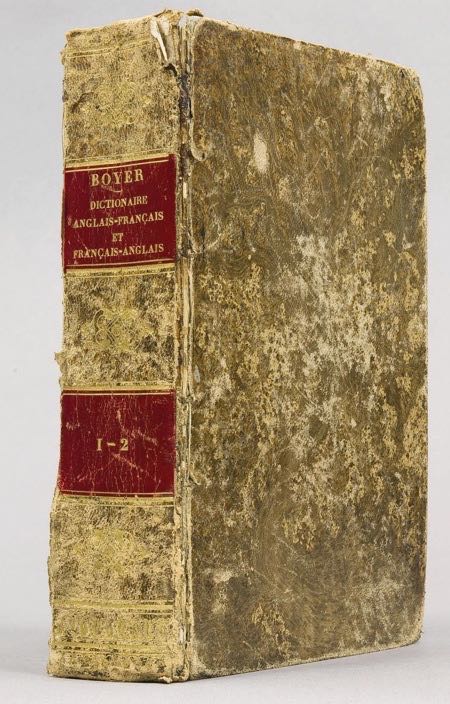
“ Le 1er décembre à Drouot Richelieu, la société de ventes volontaires Gros & Delettrez dispersera le fonds Aupick Ð Ancelle. ” This is the archive of papers (and books, including Baudelaire’s dictionary, lot 79) of Narcisse Ancelle, Baudelaire’s legal and financial advisor. There is also (lot 80) an inscribed presentation copy of the orignal Fleurs du Mal with corrections in the poet’s hand :

Les Fleurs du Mal . Paris, Poulet-Malassis et de Broise,
1857
http://catalogue.drouot.com/indexDrouot.jsp?id=5954&lng=fr
Structure Book
22 November 09
A Bookplate and a Gateway

H. P. Lovecraft was very pleased with the bookplate design of a colonial fanlight doorway that his friend Wilfrid B. Talman prepared for him. For a brief interval, a book from Lovecraft’s library came across my desk. It was a gift to him from a friend, which Lovecraft recorded along with his ownership signature. The book is now in the library of an appreciative collector and friend with strong Lovecraftian connections. To discover our shared interest in Lovecraft was to open an unexpected doorway, to find new places of light and shadow.
Lovecraft’s library was his gateway to the infinite universe. I reviewed Lovecraft’s Library by S. T. Joshi (2001) and An H. P. Lovecraft Encyclopedia by S. T. Joshi and David E. Schultz (2002) in The New York Review of Science Fiction . The review is reprinted here.
Snow Books by João Machado :
http://cargocollective.com/joaomachado#121026/Snow-Books
There was something immediately delightful in encountering this phrase, ‘ snow books ’, a notion at once fleeting and indelible : perhaps it is akin to the joyous moment toward the end of Journey to the West when the travellers find that the texts they have been given are all blank !
12 November 09
Impermanence and Death— (George Sutcliffe, binder) The Dance of Death (London, 1816). Engravings by Wenceslas Hollar after the designs of Hans Holbein, all finely hand colored. Bound in human skin with memento mori roundel of a skull on upper board, signed by George Sutcliffe. After the accidental death of his business partner Francis Sangorski, the bindery moved in 1914 to Poland Street, London ; the calligraphic note signed by Sutcliffe bears this address. Sold as soon as I bought it ; the book has prompted a an interesting range of responses from acquaintances and strangers who have seen it. It is a memento mori, a work of art in a long tradition ; a tradition that may be out of favor in the modern world where people seem reluctant to speak of death.
It is the second such book I have bought and sold ; the earlier volume was also a Dance of Death, in a simple and severe binding by an unknown binder. Oliver Robinson published an article on the subject in Rare Book Review in 2006 (the article no longer available online) ; here is a picture of the book :
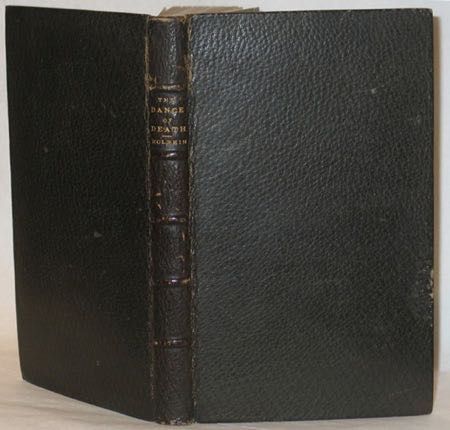
Current Reading :
— [Howell Davies]. Minimum Man or Time to Be Gone by
Andrew Marvell (Gollancz, 1938). By the author of Congratulate
the Devil , a novel of a future post-revolutionary fascist Britain
(a coup circa 1948), in which an out-of-work journalist comes upon a race of
mutant humans (the precise term might be hyper-intelligent neotene). Halfway
into the book.
Recent Reading :
— Zoran Zivkovic. The Writer. The Book. The Reader. Translated
from the Serbian by Alice Copple-Tosic and Aleksander Nedeljkovic (PS Publishing,
2009). Metafictional tales and a dense but playful essay on the recent past and
future of the book (in the form of a fictional discourse) ; the translations
are fluid and transparent for the most part, with a genuine sparkle at times :
especially the Captain’s Library in “ The Book ”,
and Apples and Lemons and Blackberries in “ The Reader ”.
The section on the book as female (and the long history of the privileged male
reader) evokes serious issues but the metaphor does not function so readily into
English (Auberon’s sense of the sexiness of Spanish in Little, Big is
rather more successful.) ; the description of the book launch party is,
however, universal and very funny. Zivkovic was a guest of honor at the World
Fantasy Convention and expressed himself with great wit in the discussion on
reading I attended ; I suspect the novel by Orhan Pamuk that he recommended, “ The
Museum of Virginity ”, may be altogether a different book from The
Museum of Innocence by Pamuk published in the U.S.
— [John Steinbeck]. Steinbeck. Steinbeck. Steinbeck. A Life in
Letters. Edited by Elaine Steinbeck and Robert Wallsten (Viking, 1975).
Yes the name appears three times on the title page, lest you forget the subject
of this book. He wrote great letters and abhorred publicity and the attempts
upon his time (he took delight in telling his friends just how speedily he had
refused the demands of a television station).
5 November 09
‘ a good Fass leaf ’
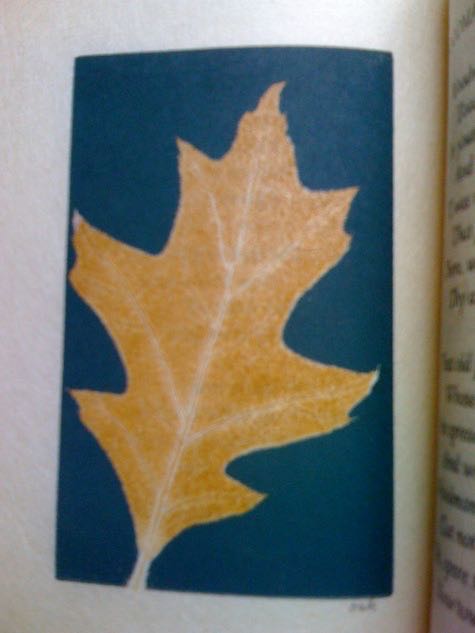
— John Fass, editor & printer. Twenty-Five Poems about Trees and Leaves including some prints of leaves. Device on the title-page designed by Valenti Angelo; 8 plates of leaves (horse chestnut, oak, mulberry, evergreen, etc.) nature prints directly from the leaves. [52] pp. 12mo, [New York] : Hammer Creek Press, 1959. 30 copies on Sekishu paper on a small hand-press by John S. Fass at the Hammer Creek Press. Cohen 41.
This is a beautiful and genuinely rare book, already sold even before I saw it ; a book that I have known about since reading Aveve Cohen’s delightful memoir of the eccentric printer back in John S. Fass & the Hammer Creek Press in 1998. When I reviewed the book in AB , her letter paid me a high compliment, that I might have been a regular “ from the old days ” (when in fact I am too young to have known their shop and its milieu).
John had been interested in nature printing for a long time. He kept experimenting until he evolved a technique that satisfied him. He would search for unusual leaves and print single plates of great beauty. . . . We also enjoyed this search for leaves in our own walks with our young children. They followed our example and would come running, calling “ here’s a good Fass leaf. ” One or two passersby overheard this and asked us what a Fass leaf was, and on what tree it grew !
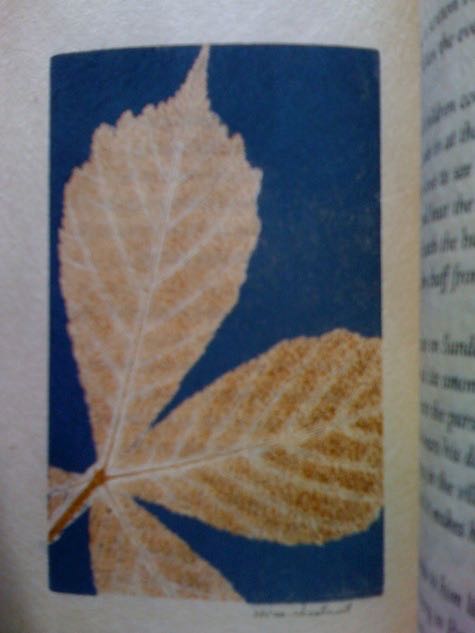
— John Fass. The Hammer Creek Press Type Specimen Book .
51, [1] pp. 12mo, New York: [Hammer Creek Press], 1954. 100 copies
on hand-made paper. Cohen 31.
Here’s a page from the type specimen book :

When I was at the Bancroft Library last week, during the tour of the print shop, I noticed a smaller press across the room and said, offhand, that looks like the size of press John Fass might have used :
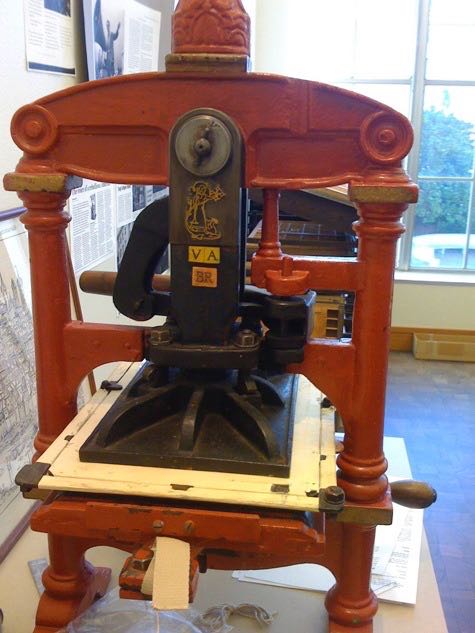
It was, in fact, the Hammer Creek Press (formerly owned by Valenti Angelo and Bruce Rogers) :

— (HAMMER CREEK PRESS) John S. Fass & the Hammer Creek Press . Essays by Jackson Burke, Eugene M. Ettenberg, with a Checklist by Herman Cohen, and a Foreword by Aveve Cohen. With wood engraving by John De Pol and 16 color facsimiles. Pp. 36, [4], [16, plates]. 8vo, Boston: David R. Godine, [1998]. First Edition, one of 1000 copies. The standard, indispensable reference work. Several of the Fass leaf books exist only in single copies.
The book produced for the exhibition is beautiful, and is a who’s who of the contemporary book world. Detail of the front cover (calligraphy by Jerry Keely) :
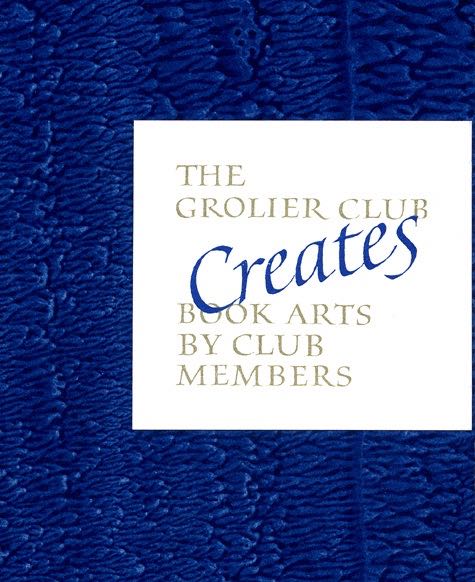
3 November 09
Current Reading
— Gordon Van Gelder, editor. The Very Best of Fantasy & Science
Fiction. Sixtieth Anniversary Anthology (Tachyon Publications,
2009). Some great familiar tales and a few I look forward to reading.
An impossible task for the editor, really, as the magazine plays
such a vital role in the form that even a 475-page volume omits as
much brilliant work as it includes. A well designed book that is
a pleasure to open and read.
— Mark Valentine. Masques and Citadels. More Tales of The Connoisseur (Tartarus
Press, [2003]). An earlier collection by the author of The Nightfarers (2009),
deft and literary, with a nod to Arthur Machen and several others of the Edwardian
and Georgian eras. The story “ Sea Citadel ” is utterly
haunting, suggestive and beautiful ; “ The Hesperian Dragon ” is
delightful, just when the languor of the narrative of Gabriel Larkland begins
to pall, things get really interesting in a feminist post-modern Chestertonian
rock ’n’ roll sort of way. The “ detective ” is
an aesthetic man of action (as if Sherlock Holmes had been addicted to poetry
and synaesthesia instead of . . . ).
Two chapbooks (see also below) :
— Isabel Allende. Book Thieves and Literary Spirits .
Hubert Howe Bancroft Acceptance Speech (Berkeley : The Bancroft Library
Press, 2007). Edition of 35 copies. Hand made, finely printed edition of Allende’s
recollections of crazy uncles and influential literary incidents : escaping “an
elegant literary death ” in an earthquake in Chile, and magical realist
reflections on after hours in the library.
— Howard Waldrop. The Ugly Chickens [Baltimore :
Old Earth Books, 2009). Edition of 300 copies, produced for distribution at the
World Fantasy Convention in San José, California, by Michael Walsh, boutique
publisher & 2009 World Fantasy Award winner, to whom : congratulations ! First
separate edition of Waldrop’s most widely known story, an ornithological
wonder first published in 1980.
A Great Book Shop
While on the west coast, I had the pleasure of my first visit to a legendary
book shop, Serendipity
Books in Berkeley, California. Labyrinthine, teeming with books of all
types, I spent an instructive and timeless three hours, part of it in conversation
with Peter Howard, the proprietor, but most of it looking at books. There
are few places like it in the U.S., perhaps in the world. Certainly there
is nothing in New York so sprawling, agglutinative, and almost geological
in its vast range of stock — and equally vast in its openness. I have
known about the shop for years, and made an opportunity to visit on this
trip. I will go back there at the next opportunity I can create.
I have written elsewhere about the taxonomy of the book trade (to use Ed
Maggs’ precise term), here,
and I am pleased to have added two new descriptive terms to my lexicon :
the Ant (the bookseller) and the Grasshopper (the book scout and/or nomadic
and/or improvident bookseller).
— Ian Jackson. The Key to Serendipity. Volume One.
How to Buy Books from Peter Howard. By Three Grasshoppers .
Text by Ian Jackson with the assistance of Arnold Aldus Jackson and
illustrations by Ann Arnold (1999 ; Berkeley : second edition,
with revisions, 2001). Advanced mathematics, whimsy, and considerable
book lore ; “ a kindly verdict on a favorite ant
by three grasshoppers. ” In the name of the shop, Serendipity,
Peter Howard “ has taken an idle grasshopper word and
made it part of the ant vocabulary. ”
— Ian Jackson. The Key to Serendipity. Volume Two. How
to Buy Books in Spite of Peter Howard. By Three Grasshoppers . Text
by Ian Jackson with the assistance of Arnold Aldus Jackson and illustrations
by Ann Arnold (Berkeley : 2000). “ This capacity of mind, the
power instantly to grasp the relevant irrelevancy is highly developed
in Peter Howard, as perhaps in most great booksellers. ” One of the
funniest conceits of these two deceptively slender books is that a third volume,
an actual explorer’s map and floor plan of the shop !
I was also presented with a copy of the following memoir of another
legend of the book trade :
— Peter B. Howard. Martin Stone, Bookscout . (Berkeley :
Serendipity Books, 2000 ; second printing, 2004). A cover photograph shows
Stone with the equally legendary English book scout Drif Field (author of Not
84 Charing Cross Road ), who both figure as characters in Iain Sinclair’s White
Chappell, Scarlet Tracings . More of these essays in recollection should
be written down and recorded before the stories (and the scouts) vanish.
Wander in the Archives
The Archives of the Endless Bookshelf have been swept and tidied and a guide has been prepared to assist wanderers. Index would be too strong a term : the headwords tend to be suggestive rather than directive. Start here. Have fun.
This creaking and constantly evolving website of the endless bookshelf : I expect that some entries will be brief, others will take the form of more elaborate essays, and eventually I will become adept at incorporating photos or comments and interactivity. Right now you’ll have to send links to me, dear readers. [HWW]
electronym : wessells at aol dot com
Copyright © 2007-2009 Henry Wessells and individual contributors.
Produced by Temporary
Culture, P.O.B. 43072, Upper Montclair, NJ 07043 USA.
